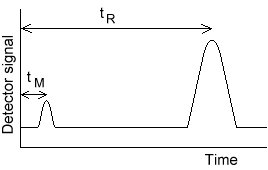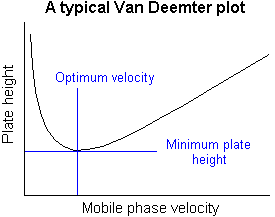NEUTRON ACTIVATION ANALYSIS
Neutron Activation Analysis (NAA) is a highly sensitive method for the accurate determination of elemental concentrations in material. Sensitivities are sufficient to measure certain elements at the nanogram level and below.
The NAA method is based on the detection and measurement of characteristic gamma rays emitted from radioactive isotopes produced in the sample upon irradiation with neutrons. Samples with unknown elemental concentrations are irradiated with thermal neutrons in a nuclear reactor together with standard materials of known elemental concentrations. Neutrons are absorbed in the nuclei of constituent atoms, and later these nuclei emit radiation with energy and quantity characteristic of the particular element. This emitted radiation is a 'fingerprint' of the element, and the amount of radiation given off at a certain energy is indicative of the amount of the element present in the sample. A comparison between specific activities induced in the standards and unknowns provides the basis for computation of elemental abundances. From this analysis, a report is issued giving elemental concentrations in the unknown sample.
In the NAA process, a nucleus absorbs a neutron. The nucleus becomes excited, and immediately releases a gamma ray and decays to a lower energy level, although it still is in an excited state. Then after a period of time (dependent on the nucleus) the excited nucleus emits a beta particle and a gamma ray, at which time the gamma ray is detected by a detector (not shown). Analysis of the spectrum of gamma rays emitted allows determination of the elemental composition of the sample.
Basic steps of NAA
The sample is first carefully weighed into a plastic or quartz container.
The sample is then sealed with a high-speed friction sealer.
The sample, along with appropriate standards and blanks, is placed near the core of the reactor and irradiated for a predetermined length of time. While it is in the reactor, it is exposed to a high intensity neutron field. If a neutron approaches the nucleus of an atom, it may be absorbed. When this happens, the element will become a different isotope of the same element. This "new" isotope is almost always unstable (radioactive) and usually decays by emitting a gamma ray(s).
The sample is then pulled out of the reactor and then it is allowed to decay for a predetermined length of time.
The sample may be counted immediately, for elements with short half-lives, or counted after a delay for samples with longer half-lives. The reason for the delay for isotopes with longer half-lives is to allow the isotopes with a short half-life to decay away, thereby preventing interference and allowing the isotopes with longer half lives to be more easily measured.
After the sample decays, it is "counted" using gamma ray detectors.Gamma rays are very penetrating, so the gamma rays emitted from the center of the sample easily reach the detector. The resulting gamma-ray spectra looks something like a gas chromatograph spectra with "peaks" at different "retention times".
The position of each peak determines the energy of the gamma ray (identifying the responsible element), and the area under the peak is proportional to its concentration. Final results are obtained after correcting for detector efficiency, decay time, size of the sample, and counting and irradiation times. The comparator standard approach is normally employed with this method. A "standard" is irradiated and counted along with the sample(s). This standard contains a known amount of the element(s) to be determined. Although matrix problems are not usual, standards are usually selected to be similar to the sample(s).
Applications of NAA
The technique of Neutron Activation Analysis (NAA) can be applied to virtually all sample types without any pretreatment of the sample. This includes:
solids such as:coal, metals, sediments, ores, tissues, bone, synthetic fibers, alloys, bullets, crystals, gems, glass, hair, gunshot residues, moon samples, wheat spores, wood, tree leaves, tree needles, plastic films, rocks, salts, shells, skin, soil, sugar, teeth, minerals, metals, meteorites, ocean sediments oxides, and fingernails,
liquids such as:
blood, gasoline, manufacturing wastes, oil, urine, and water,
gases such as:
argon, chlorine, and fluorine,
suspensions and slurries such as:
sewage sludge, river water, foods, biological tissue samples, animal samples, chemicals, chemical compounds, chemical solutions, chemical tracers, paint, fish, and enzymes.
Some other uses of are as follows:Detecting impurities in industrial and food products,
Tracing the transport and utilization of elements in animal metabolism,
Looking for arsenic in human hair to determine if someone was poisoned,
Checking soil samples of reclaimed dump sites to see if there were any hazardous materials left over from those sites,
Irradiating dinosaur bones to look for iridium to show that a meteor caused their extinction
Advantages of NAA over other chemical analyses
NAA is a nondestructive process of determining the chemical composition of a sample, as the sample is not changed in any manner by chemical manipulation or the introduction of any material prior to irradiation. NAA measures the total amount of an element in a material without regard to chemical or physical form. Samples analyzed can be liquids, solids, suspensions, slurries, or gases and do not have to be put in a solution or vaporized.
NAA has the other following advantages:
Since neutrons activate the nucleus of an atom and do not interact with the electron shell, this method detects the total elemental content, regardless of oxidation state, chemical form or physical location. Neutrons have no charge and will pass through most materials without difficulty. Therefore the middle of the sample becomes just as activated as the outer surface.
The sample is not permanently damaged by NAA, and in the case case of forensic analysis and analysis of rare samples, such as meteorites or archeological finds, the sample can be saved and even subjected to further analysis at a later time. In most other chemical analysis processes, however, the sample may be vaporized, dissolved, burned, melted, or otherwise permanently altered.
NAA is a multi-element analytical technique in that many elements can be analyzed simultaneously in a given sample gamma spectrum without changing or altering the apparatus as is necessary in atomic absorption.
NAA is time efficient for a large number of samples, as many samples can be irradiated at a given time and counted later on a given decay schedule.
Although the sample may become slightly radioactive in NAA, the radiation in the sample decreases with time until it reaches a state similar to which it was before the NAA was performed on it.NAA is also extremely sensitive to trace elements. The sensitivity obtained by NAA depends on a large number of factors, including neutron flux, the sensitivity of the detector, time irradiated, the neutron cross section of the elements in the sample.






